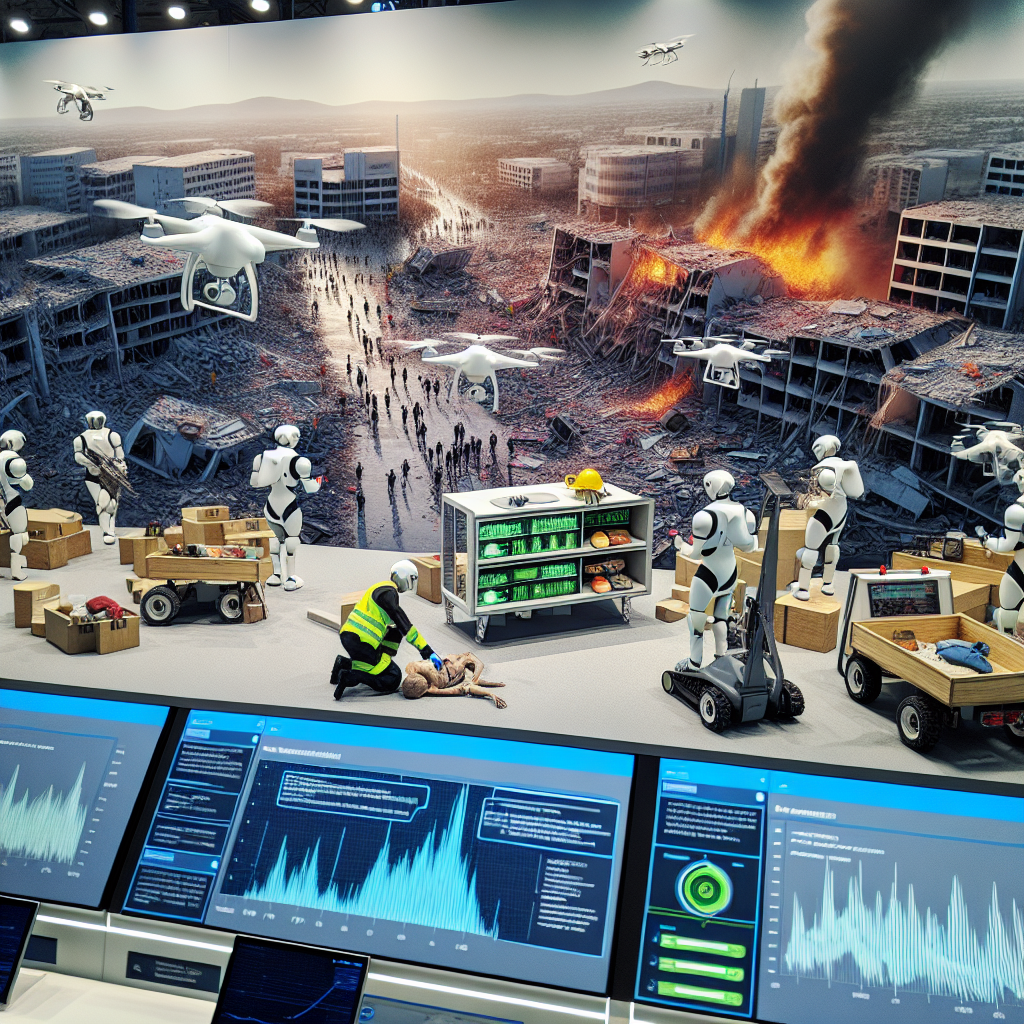In recent years, the use of artificial intelligence (AI) automation in disaster response and recovery efforts has become increasingly prevalent. AI technology offers a wide range of benefits that can significantly improve the efficiency and effectiveness of disaster management operations. From predicting disasters to coordinating rescue efforts and assessing damage, AI automation plays a crucial role in streamlining the response and recovery process. In this article, we will explore the key benefits of AI automation in disaster response and recovery, as well as address some frequently asked questions about this technology.
1. Early Warning Systems
One of the most important benefits of AI automation in disaster response is its ability to predict and provide early warnings for natural disasters. AI algorithms can analyze vast amounts of data from various sources, such as weather patterns, seismic activity, and historical data, to accurately predict when and where disasters are likely to occur. This early warning system allows authorities to take proactive measures to mitigate the impact of disasters and evacuate at-risk populations in a timely manner.
2. Rapid Response and Coordination
During a disaster, time is of the essence, and quick and coordinated response is crucial to saving lives and minimizing damage. AI automation can play a key role in facilitating rapid response and coordination efforts. AI-powered systems can analyze real-time data from various sources, such as drones, satellites, and social media, to provide up-to-date information on the disaster situation. This information can help emergency responders make informed decisions and allocate resources more effectively.
3. Damage Assessment and Recovery Planning
After a disaster has occurred, AI automation can help assess the extent of the damage and plan for recovery efforts. AI algorithms can analyze aerial images and other data to quickly assess the damage to infrastructure, buildings, and other assets. This information can help authorities prioritize recovery efforts and allocate resources more efficiently. AI automation can also assist in developing recovery plans and simulations to ensure a smooth and timely recovery process.
4. Resource Allocation and Optimization
AI automation can help optimize the allocation of resources during disaster response and recovery efforts. By analyzing real-time data on the ground conditions, population movements, and other factors, AI algorithms can help authorities determine where resources are most needed and how to best distribute them. This can help prevent bottlenecks and ensure that resources are used efficiently to maximize the impact of disaster response efforts.
5. Enhanced Communication and Information Sharing
Effective communication is essential during a disaster to coordinate response efforts and keep the public informed. AI automation can help improve communication and information sharing by analyzing and synthesizing vast amounts of data from various sources. AI-powered chatbots and virtual assistants can provide real-time updates and answer common questions from the public, freeing up human resources for more critical tasks. AI automation can also help authorities monitor social media and other channels to identify emerging trends and address misinformation.
6. Continuous Monitoring and Learning
Another key benefit of AI automation in disaster response and recovery is its ability to continuously monitor and learn from past experiences. AI algorithms can analyze historical data from previous disasters to identify patterns and trends that can help improve future response efforts. By continuously learning and adapting, AI automation can help authorities better prepare for and respond to disasters in a more efficient and effective manner.
7. Cost-Effectiveness
AI automation can also help reduce the costs associated with disaster response and recovery efforts. By automating repetitive tasks and streamlining processes, AI technology can help minimize manual labor and reduce the need for expensive equipment and resources. This can lead to significant cost savings for governments and organizations involved in disaster management.
8. Scalability and Flexibility
AI automation offers scalability and flexibility in disaster response and recovery efforts. AI-powered systems can be easily scaled up or down based on the size and scope of the disaster. This flexibility allows authorities to quickly adapt to changing conditions and allocate resources as needed. AI technology can also be integrated with existing systems and technologies to enhance their capabilities and improve overall disaster management operations.
FAQs:
Q: How reliable are AI predictions for natural disasters?
A: AI predictions for natural disasters have shown to be highly accurate, especially when combined with data from multiple sources. While no prediction system is foolproof, AI technology can significantly improve the accuracy and timeliness of disaster warnings.
Q: Can AI automation replace human responders in disaster management?
A: AI automation is meant to augment and enhance human response efforts, not replace them. While AI technology can help automate certain tasks and streamline processes, human responders are still essential for making critical decisions and coordinating response efforts during a disaster.
Q: Is AI automation accessible to all countries and organizations?
A: AI automation is becoming more accessible to countries and organizations of all sizes, thanks to advancements in technology and the availability of off-the-shelf AI solutions. However, there are still challenges related to data access, infrastructure, and funding that may limit the adoption of AI technology in some regions.
Q: How can organizations prepare for integrating AI automation in disaster management?
A: Organizations can prepare for integrating AI automation in disaster management by investing in training and capacity building, establishing partnerships with AI technology providers, and developing clear policies and protocols for using AI technology in disaster response and recovery efforts.
In conclusion, AI automation offers a wide range of benefits in disaster response and recovery efforts, from predicting disasters to coordinating response efforts and assessing damage. By leveraging AI technology, authorities can improve the efficiency, effectiveness, and timeliness of disaster management operations, ultimately saving lives and minimizing damage. As AI technology continues to advance, it is essential for governments, organizations, and communities to embrace and integrate AI automation into their disaster management strategies to better prepare for and respond to disasters in the future.

